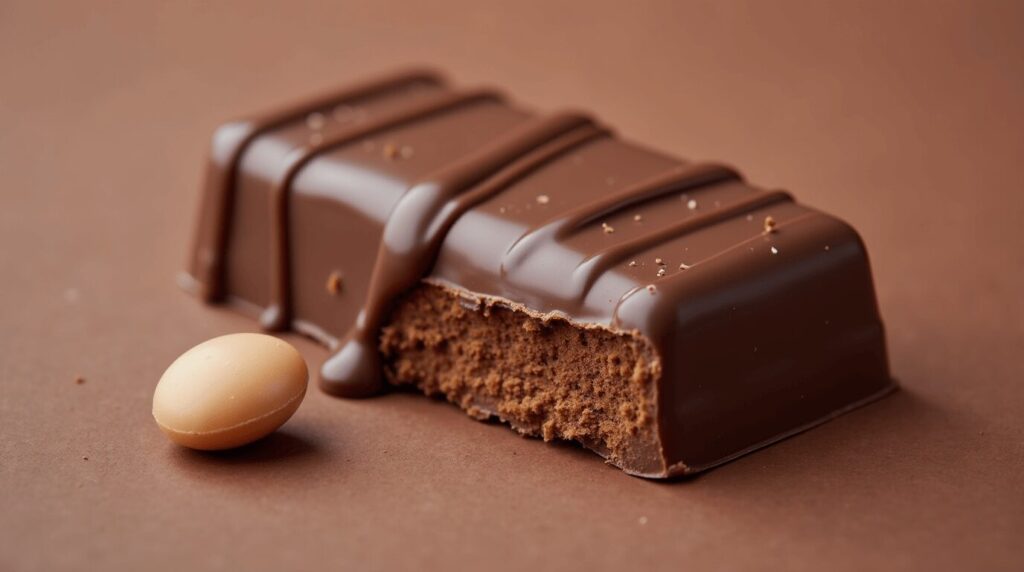Chocolate and candy are often considered interchangeable terms. However, is this assumption accurate? This guide explores the rich history, classifications, and cultural significance of chocolate to determine whether it can truly be defined as candy. In addition, we’ll examine its origins, variations, and why it continues to be a global favorite. Above all, we aim to uncover the uniqueness of chocolate candy.
What Is Chocolate Candy?
In short, chocolate candy refers to a delightful treat made by combining cocoa beans, sugar, and often milk or other ingredients to create a sweet and satisfying confection. This type of chocolate fits into the broader candy category due to its specific characteristics. However, not all chocolate qualifies as candy, as the classification depends on ingredients, presentation, and intended use.
Above all, chocolate candy is defined by its balance of sweetness and indulgence, which appeals to a wide range of preferences. In addition, its versatility allows it to take many forms, from simple bars to elaborate truffles. For instance, the addition of sugar and milk to cocoa transforms it into a treat that fits comfortably within the candy family.
On the other hand, pure or unsweetened chocolate does not always meet the candy classification. For example, dark chocolate with minimal sugar content is frequently seen as a standalone delicacy or even a health-oriented product. Similarly, while some chocolates are created as luxurious desserts, others are offered as convenient, bite-sized treats.
Additionally, the presentation of chocolate plays a significant role in its classification. Items such as individually wrapped chocolates, chocolate-covered nuts, or small candy bars are more likely to fall into the candy category. As a result, the way chocolate is packaged and consumed often influences how it is perceived.
In conclusion, chocolate candy represents a subset of chocolate products that combine sweetness, size, and indulgence to create a treat that stands apart. Because of this, chocolate occupies a unique space in the world of confections, balancing between being a candy and a luxurious treat.
Key Characteristics of Chocolate as Candy
- Sweetness: Chocolate candy contains added sugars that enhance its flavor.
- Textures and Forms: It can take the form of bars, truffles, or chocolate-coated treats.
- Purpose: Above all, chocolate candy is marketed as a luxurious indulgence, perfect for satisfying sweet cravings.
Not only does sweetened chocolate fit the broad definition of candy, but its versatility also makes it an integral part of the confectionery world.

A Sweet Journey Through History
Chocolate’s transformation into candy is not only a testament to its adaptability but also a reflection of cultural evolution. In addition, its journey is as fascinating as its taste.
From Cocoa Beans to Confections
- Ancient Beginnings: The Olmecs, Mayans, and Aztecs used cacao beans to create a ceremonial drink that was unsweetened and bitter.
- European Influence: When cacao reached Europe, sugar and milk were introduced, transforming it into sweet chocolate. As a result, chocolate became immensely popular.
- Industrial Revolution: Innovations such as the cocoa press enabled mass production. Consequently, chocolate candy became affordable and accessible to all.
For instance, iconic brands like Hershey’s and Cadbury capitalized on chocolate’s versatility by creating a variety of forms, such as bars and bonbons.
How Is Chocolate Made?
Above all, chocolate candy is a perfect blend of science and artistry. Moreover, each step in its creation requires precision and care.
Steps to Create Chocolate Candy
- Harvesting Cocoa Beans: Farmers extract beans from cacao pods.
- Fermentation and Drying: The fermentation process develops the beans’ flavor, followed by drying to prepare them for roasting.
- Roasting and Grinding: After fermentation, producers roast the beans to enhance their aroma and then grind them into cocoa liquor.
- Mixing and Refining: In this step, producers blend sugar and milk with the cocoa liquor to create a smooth chocolate base.
- Tempering: Careful heating and cooling of the chocolate ensures a glossy and smooth finish.
- Molding and Packaging: Finally, manufacturers shape the chocolate into desired forms and wrap it for distribution.
- By rephrasing, the active voice improves clarity while keeping the steps engaging and informative.
As a result of these steps, chocolate candy achieves its characteristic smoothness and sweetness.
For more ideas on desserts, check out Cheesecake Brownies Recipes.
Chocolate’s Role in Global Traditions
Across the globe, chocolate holds cultural significance that goes beyond its status as a mere sweet. In some societies, it is used for ceremonial purposes, while in others, it is a gift symbolizing love or respect. For example, in Mexico, hot chocolate is a staple during celebrations, while in Switzerland, it represents a key part of their culinary heritage. Consequently, chocolate adapts seamlessly to diverse traditions and preferences.
How Cultures Interpret Chocolate Confections
- Gift Giving: In Japan, chocolate is integral to Valentine’s Day, where women give it to men as a token of affection.
- Ceremonial Use: In Central America, cacao drinks were considered sacred by the Mayans.
- Luxury Item: In Europe, rich, handcrafted chocolates are often associated with sophistication and indulgence.
In conclusion, chocolate transcends being a simple sweet, taking on deeper meanings in different contexts.

Why We Love Chocolate Creations
There is more to chocolate’s allure than just its taste. Research suggests that the combination of sugar, fat, and cocoa activates the brain’s reward system. Additionally, compounds like theobromine and caffeine provide mild stimulation, making it difficult to resist.
What Makes Chocolate Irresistible?
- Texture and Melting Point: Chocolate’s smooth texture and ability to melt at body temperature contribute to its luxurious feel.
- Aromatic Compounds: The rich aroma of chocolate enhances the sensory experience.
- Emotional Connection: Above all, chocolate is often associated with comfort and happiness.
As a result, chocolate’s appeal lies not only in its flavor but also in its ability to stimulate our senses and emotions.
Innovations in Chocolate Delicacies
Modern Trends in Chocolate Creations
The world of chocolate is constantly evolving. Artisans and manufacturers are experimenting with new techniques and ingredients to create innovative products. For instance, ruby chocolate, a naturally pink variety, has gained popularity in recent years. Additionally, plant-based and sugar-free options are reshaping the market to cater to health-conscious consumers.
Emerging Chocolate Variations
- Ruby Chocolate: Its fruity flavor and vibrant hue make it a unique option.
- Vegan Chocolate: Made without dairy, it caters to plant-based diets.
- Single-Origin Chocolate: Highlighting the unique flavors of cacao from specific regions.
In short, innovation ensures that chocolate continues to captivate new generations of enthusiasts.
Pairing Chocolate with Other Flavors
Perfect Combinations for Chocolate Treats
Chocolate’s versatility makes it an ideal partner for a variety of flavors. From sweet to savory, these pairings elevate its complexity and enhance its appeal. For example, sea salt enhances the sweetness of chocolate, while chili powder adds a spicy kick.
Creative Chocolate Pairings
Spiced Pairings: Infusing chocolate with cinnamon or cayenne introduces warmth and depth.
Sweet Pairings: Chocolate with caramel or fruit highlights its richness.
Savory Pairings: Combining chocolate with pretzels or bacon creates a balanced contrast.
Health Benefits of Dark Chocolate Treats
Dark chocolate stands out for its potential health benefits, making it a unique category in the world of sweet confections. In contrast to milk chocolate, dark varieties contain higher cocoa content and less sugar, offering a richer flavor and more antioxidants. Additionally, studies suggest that moderate consumption of dark chocolate may improve heart health and reduce stress. However, although it is often promoted as a “guilt-free indulgence,” moderation is still essential. As a result, dark chocolate treats have carved a niche for those seeking both flavor and wellness in their snacks.

Creative Variations of Chocolate Candy
In fact, chocolate candy is incredibly versatile, offering countless variations that cater to different tastes. Moreover, it is a staple for celebrations and indulgences alike.
Popular Types of Chocolate Candy
- Bars: For example, Snickers and Milky Way layer textures and flavors.
- Truffles: These luxurious treats have rich, ganache-filled centers.
- Clusters: Similarly, chocolate-coated nuts or dried fruits add crunch.
- Chocolate-Covered Treats: In addition, chocolate-dipped pretzels or strawberries combine sweet and savory elements.
DIY Chocolate Candy Tips
On the other hand, making chocolate candy at home allows for creative freedom.
- Experiment with flavors, such as mint or chili powder, for unique combinations.
- Use molds to shape chocolates into festive designs.
- Infuse the chocolate with liqueurs or spices to elevate it into a gourmet experience.
Is Chocolate Considered Candy?
Whether chocolate is considered candy often depends on its form and how it is perceived culturally. In addition, sweetened chocolate aligns well with the definition of candy, but unsweetened varieties may not.
Arguments for Chocolate as Candy
- Sweetness: It contains sugar, a hallmark of candy.
- Presentation: Moreover, it is often sold in small, treat-sized portions.
Arguments Against Chocolate as Candy
- Purity: In contrast, unsweetened or dark chocolate lacks the sugary sweetness typical of candy.
- Cultural Differences: Additionally, some cultures view chocolate as a delicacy separate from other sweets.
For instance, sugar-free options like Sugar-Free Chocolate Recipes offer a healthier alternative.
Fun Facts About Chocolate Candy
Not only does chocolate candy have a rich history, but it is also accompanied by intriguing trivia.
- Chocolate candy sales spike during holidays such as Halloween and Valentine’s Day.
- The largest chocolate bar ever made weighed over 12,000 pounds!
- Dark chocolate, rich in antioxidants, is often referred to as a “healthy candy.”
Conclusion: Is Chocolate Candy?
In conclusion, sweetened chocolate undoubtedly fits into the candy category, thanks to its sugary profile and indulgent presentation. However, unsweetened chocolate may stand apart as a delicacy. Above all, chcolate candy’s versatility ensures its status as a timeless treat.
For more ideas and inspirations, visit the FoodGam Blog.
- Explore more creative recipes at Tasty.
- Discover delightful desserts on All Recipes.
- Find innovative food ideas at Delish.







